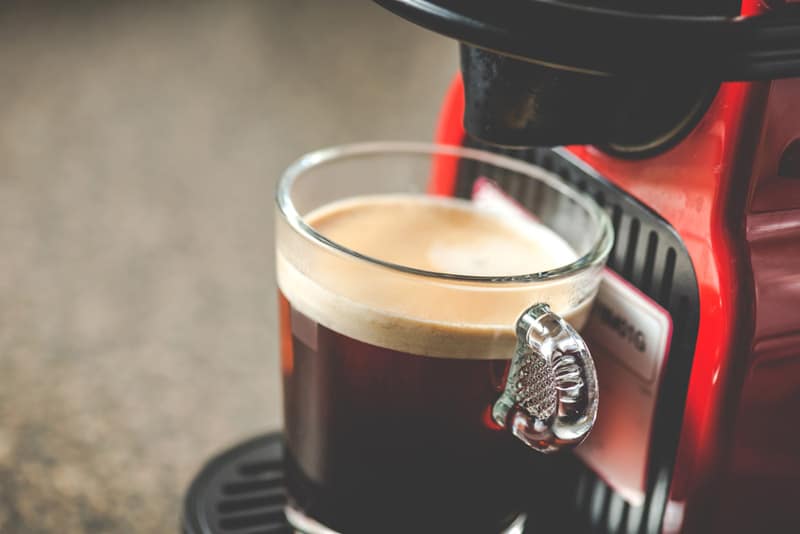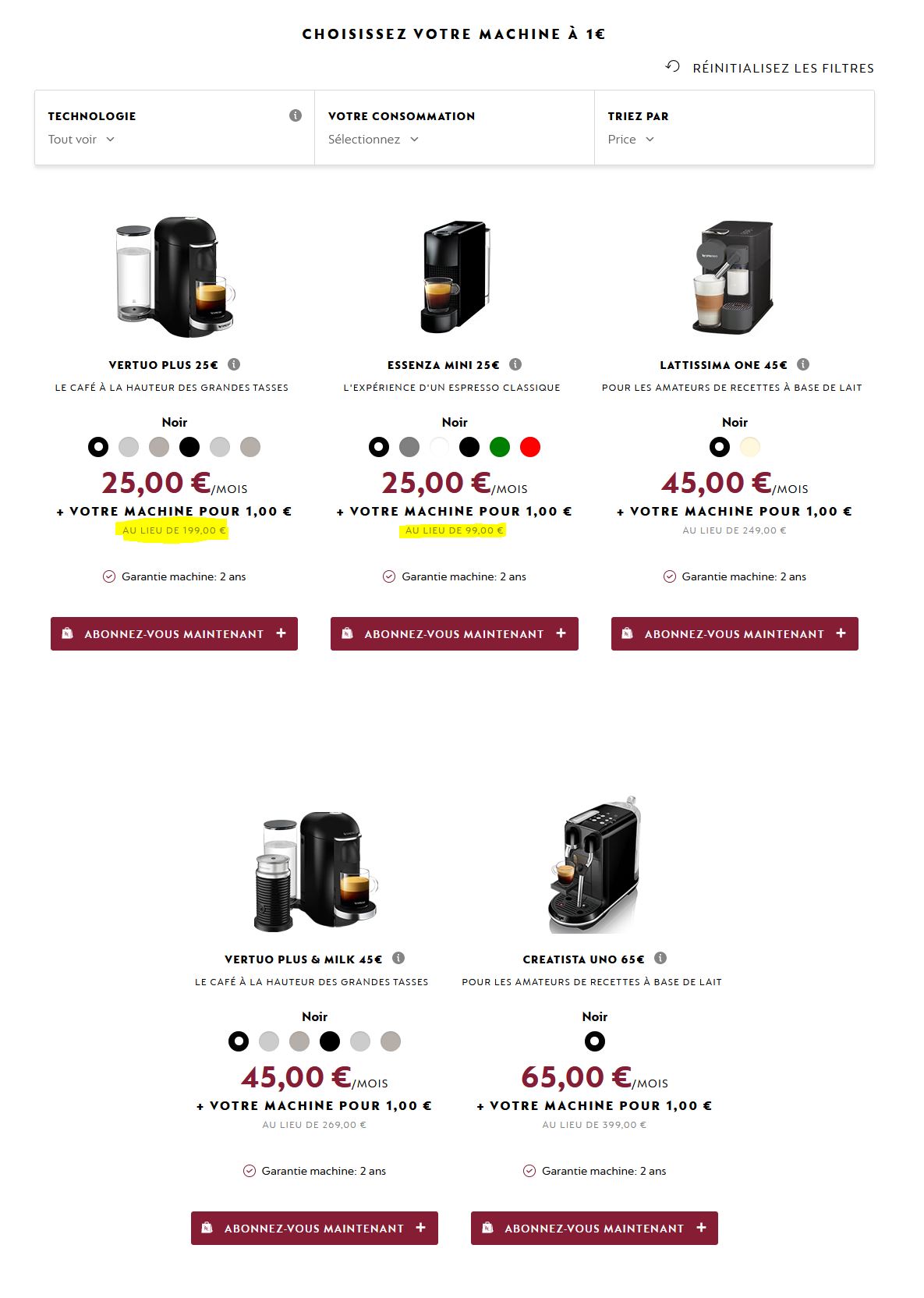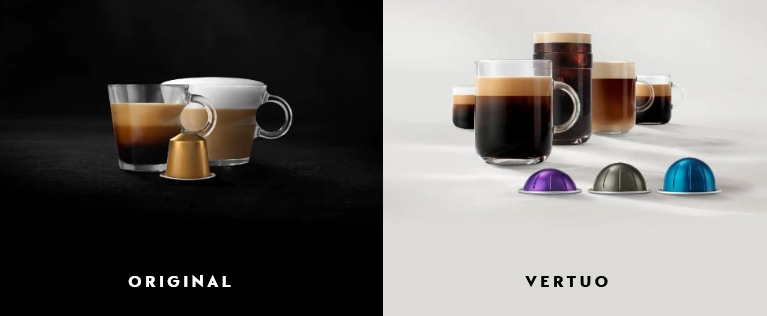
Nudge marketing techniques can be used to promote good behaviour. But they can also be used to direct your buying behaviour in favour of the seller. This is what Nespresso is doing as part of the promotion of its subscription offer that we have already discussed here (note in passing the price increases). You have to admit that the marketers at Nespresso are smart (remember the Prodigio offer to track your slightest purchasing habits). Let’s take a look at their nudging techniques.
If you only have 30 seconds
Nespresso has set up 3 nudge marketing tips to promote its 1€ machine offer (+ subscription):
- 5 options proposed to limit the cognitive load
- most profitable machines placed at the beginning and end of the reading direction
- comparison of the 2 cheapest machines for pushing a particular model
By pushing a specific machine, Nespresso tries to convert customers to a new proprietary capsule format without competition.
A few words about nudges
“Nudge” is a technique for unconsciously directing behaviour. The method became popular with the case of the urinals at Amsterdam airport. The application of a nudge has reduced cleaning costs by making the gentlemen more focused on the centre of the urinal. ? Other applications of nudges have flourished in recent years (an example of a pedestrian crossing in Iceland here), and the success of Dan Ariely’s book has contributed significantly to this (see references at the bottom of the article). While nudges can therefore be used to promote virtuous behaviour, they can also be misused to take advantage of the “weaknesses” of our brain and the automatic mechanisms stored in the cerebellum. An unconscious nudge can also lead to unexpected results, like this example in an airport shows.
The consumer does not make a perfectly conscious choice
Where the consumer is subject to a choice among several options, the provision of these options influences his choices, notwithstanding the intrinsic characteristics of the options available. In other words, the consumer is mainly attracted by the possibilities that correspond to the beginning and the end of the reading direction. In fast-food restaurants, where menus are displayed high up at the checkout, consumers will thus more frequently opt for the dishes or drinks that are presented at the top left and bottom right. Don’t be surprised if the most expensive options are placed there. The same principle can be applied to websites, and apparently, this is what Nespresso has done.
The most expensive Nespresso machines unconsciously placed in the spotlight
Nespresso assimilated the lesson on nudges well and made a clean sweep of the presentation of its 1€ machines. If there was only one thing to remember, it was the 3 tips on the presentation page:
- the most profitable machines for Nespresso are placed at the top left and bottom right
- the 2 most inexpensive machines are placed side by side but the “before discount” price argument tips the balance in favour of the left-hand machine
- only 5 options are proposed, which avoids increasing the cognitive load related to the choice (the short memory only allows to retain 3 to 7 options, 5 being the “sweet spot”)
As a result, if you’re looking for a cheap option, you’re bound to be attracted to the “Vertuo Plus” machine with a €25 subscription. Except that there is a significant disadvantage with this machine and Nespresso is careful not to explain it to you.
Nespresso wants to sell you the machine that generates the most profit
I’m not going to go back over the patent issues. Since they have fallen into the public domain, Nespresso has faced fierce competition. They have therefore invented a new form of capsule to “lock-up” customers and prevent them from going to the rival: Vertuo. Except that Nespresso is careful not to warn you if you choose the machine in question. I won’t venture to say that this is voluntary, but what I can tell you is that the price is not at all the same: 0.45 to 0.70€ per Vertuo capsule whereas the cost of the original capsules (excluding limited editions) varies between 0.39€ and 0.45€.
References
Ariely, D. (2017). C’est (vraiment?) moi qui décide. Les raisons cachées de nos choix. Flammarion.
Posted in Marketing.



